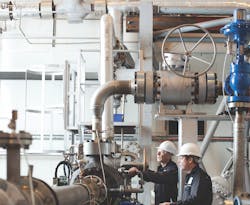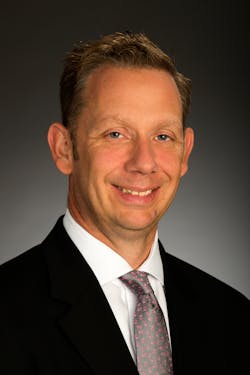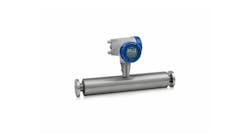Celeros FT is a divestment of the Power & Energy brands at SPX FLOW. They decided to pursue a strategy focused on the food, beverage and industrial sectors, and the power and energy brands had a lot of inherent value, which made them an attractive divestment proposition.
We could see that the divestment was a great opportunity to take some of the brands to the next level. Celeros FT is now focusing on growth in the flow control space across multiple industries with a leadership team that understands the market, products and applications.
What is the relationship between Celeros FT and its product brands?
Celeros FT is the global entity that we want to establish, but we also want our brands to be more visible. As a private company, we are more focused on building the brands with our customers – not shareholders. Our portfolio currently includes: Airpel, ClydeUnion Pumps, Copes-Vulcan, Dollinger, GD Engineering, M&J Valve, Plenty and Vokes, so we offer a full suite of flow control technologies: pumps, valves, closures and filtration.
Many of our brands have a long heritage that we can build on; others are more recent but have already gained a good reputation. So, the product brands will be supporting the Celeros FT brand, and will become more prominent in their own right.
Who is the leadership team and what is their role?
There are nine of us and our job titles are pretty self-explanatory. As VP of aftermarket and market development, I oversee the product management teams who serve both original equipment and aftermarket customers. José Larios, our CEO, is very familiar with the brands and has considerable leadership experience, including his previous role as president of the industrial and energy segments at SPX FLOW. Mike Brooks is VP of global sales and is responsible for all commercial operations and external sales. We then have Scott Weatherford, chief technology officer; Jeff Conley, global head of manufacturing, and Gary Kilponen, VP of procurement, who is responsible for the company’s supply chain. Completing the leadership team are Chris McViker, chief finance officer; Clare-Frances Bradshaw, VP of legal; and Adam Brainard, VP of human resources.
Our aim is to serve as a full life-cycle optimization partner and as an experienced advisor to our customers on all matters concerning the world's critical flow systems.
What markets and geographies is the business focusing on?
We serve the power (nuclear, conventional and renewables), energy and chemical processing markets as well as oil and gas and defense industries. We aim to expand our presence into other markets too as we grow.
Geographically, the legacy of the business was more focused on North America and Europe, where we had installed base. More recently, we have been growing in the Middle East and Asia Pacific as well as in India – particularly for aftermarket – and we aim to establish a similar presence here as we have in the more developed economies. We have invested in resources, people and aftermarket infrastructure to support our customers in those geographies.
The company launched just as the world went into lockdown. What additional challenges did you and your colleagues face?
COVID-19 certainly threw up some additional challenges around the launch. Not being able to see customers personally was a setback: however, we’d been doing a really good job of communicating with them since May 2019 when we began planning the divestment. So, they were already engaged in the transformation when the pandemic hit. Keeping them informed about the additional changes due to COVID-19 didn’t catch us off guard, as it might have done with other companies.
At the outset, we also had many employees out in the field who needed to be brought home safely – which we managed successfully. That was a real test of our agility, as borders were being shut and travel options disappeared. We’ve since established routines to mitigate further risk. For instance, something I do every day is host a call for all field service jobs in the morning. After checking that the team on-site has the right protection and that adequate procedures at the customer site are in place, I make the final decision as to whether it is safe for the team to go ahead with the job. This not only protects our employees but also our customers, vendors and communities, which is very important to us and another demonstration of how we live our company values.
How does your aftermarket team work with customers?
One example that comes to mind is a petrochemical customer who wanted to minimize downtime associated with some third-party four-stage barrel pumps at its refinery. The original equipment manufacturer was no longer in business, but the existing impellers and diffusers were in urgent need of repair or replacement.
We used state-of-the-art, non-contact laser technology to obtain highly accurate scan data of the damaged impeller and diffuser parts. This enabled us to diagnose that the pumps were exhibiting signs of wear caused by inherent design flaws. Thanks to our in-house engineering expertise, we have been able to improve the suction characteristics of the pumps to reduce cavitation damage and increase overall efficiency. The use of stronger and more corrosion-resistant materials has also improved the service life of the components, which in turn improves the overall mean time between failures (MTBF). And with 3D computer models and all the data for the pumps and parts now recorded accurately, it will be easy for Celeros FT to supply the customer with spare parts in the future: extending pump life and making servicing and maintenance simpler.
Repair and maintenance are essential aspects of aftermarket care, but there are many other ways in which we help customers. For example, we support nuclear power station operators in keeping documentation fully up to date and compliant – which, for a facility with a 35-year design life and hundreds of flow control components, is a considerable task. We also offer training courses to ensure that knowledge is shared: customers for these sessions include representatives from regulatory authorities, as well as client engineers and quality managers.
We also seek new ways of applying our considerable OEM and field engineering expertise to improve the support we can offer. A great example is the work our filtration team are doing currently to help gas processors obtain real-time data about their product flows. Acquiring filtration data in the field – either for fault diagnosis or maintenance and quality checks – is notoriously problematic. Our pioneering Gas Filtration Test Skid completely changes this situation by enabling customers to gain a better understanding of their liquid process and filtration requirements without interrupting production. It allows the quantities of solid and liquid contaminants in gas flows to be detected and estimated with far greater precision, empowering gas processors to take appropriate action: either by implementing a new filtration solution or upgrading their existing one. Projects such as this clearly demonstrate our commitment to delivering outstanding aftermarket support.
What does the future look like?
COVID-19 has certainly challenged and affected production across all industries and the ramifications will go on for some time. It seems likely that business focused around capital investment may be paused or reduced, but that there will be a greater demand for servicing and maintenance. Critical equipment will always need maintenance and emergency service, even if customers are not replacing or ordering new equipment.
As Celeros FT has a mission-critical market focus, we are cautiously optimistic that we will be able to thrive after the pandemic is over. Our immediate challenge is focusing on the markets which come back first and ensuring we are leading the way in the recovery by providing competitive solutions for our customers. Longer term, our combination of OEM and aftermarket services mean we can play the long game and will be there to help optimize customers’ flow control systems from initial design right through to the end of their operational lifetime.



